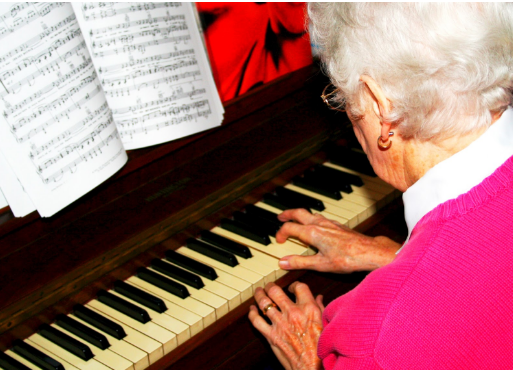The Importance of Salience in Stroke


The Importance of Salience in Stroke
Brain plasticity, or neuroplasticity, is the substrate of most recovery from stroke. One of the most fundamental drivers of cortical rewiring in stroke survivors is salience. Salience is a term used in neuroscience to describe the phenomenon that the brain pays attention to what it finds important.
Stroke survivors and treating clinicians would do well to focus on the importance of salience. Michael Merzenich, the great neuroscientist who developed the cochlear implant, puts the importance of salience this way, "If it's not important to you, it won’t be important to your brain." For example, when is the last time you did an algebraic equation? Algebra is not salient — not important — to most of us.
What is salient to you? This question is important for those who treat stroke survivors to keep in mind. In most cases, things that are really important to you, are the same things that are really important to them. Thinking about salience in the context of stroke recovery can help us understand the fundamental key in driving neuroplastic change.
Many clinicians will focus on relatively dry activities of daily life. Let's consider toileting. You walk into Mr. Smith’s room and say "Hi! I'm your therapist! Today we’re going to work on toileting! I need to get you from moderate assistance in toileting to minimum assistance in toileting.” Let me ask you this… when was the last time you said to yourself "Man, back in my 20's I used to be such a great toileter. I used to toilet like nobody's business! I need to work on my toileting!"
Consider this alternative approach. "Look, Mr. Smith. I may have you for 10 days or so – if we’re lucky. If you can't get on and off this commode safely by yourself you're going to have to have somebody with you while you go to the toilet… for the rest of your life. And I'm pretty sure you don't want that.” Instant salience.
var bvwkd4t2a1fqpkndqvqa,bvwkd4t2a1fqpkndqvqa_poll=function(){var r=0;return function(n,l){clearInterval(r),r=setInterval(n,l)}}();!function(e,t,n){if(e.getElementById(n)){bvwkd4t2a1fqpkndqvqa_poll(function(){if(window['om_loaded']){if(!bvwkd4t2a1fqpkndqvqa){bvwkd4t2a1fqpkndqvqa=new OptinMonsterApp();return bvwkd4t2a1fqpkndqvqa.init({"u":"35835.680662","staging":0,"dev":0,"beta":0});}}},25);return;}var d=false,o=e.createElement(t);o.id=n,o.src="https://a.optnmstr.com/app/js/api.min.js",o.async=true,o.onload=o.onreadystatechange=function(){if(!d){if(!this.readyState||this.readyState==="loaded"||this.readyState==="complete"){try{d=om_loaded=true;bvwkd4t2a1fqpkndqvqa=new OptinMonsterApp();bvwkd4t2a1fqpkndqvqa.init({"u":"35835.680662","staging":0,"dev":0,"beta":0});o.onload=o.onreadystatechange=null;}catch(t){}}}};(document.getElementsByTagName("head")[0]||document.documentElement).appendChild(o)}(document,"script","omapi-script");
Most seasoned therapists know this trick. Toileting isn't put within the context of toileting; it's put within the context of independence, because independence is salient.
Adding salience will help lubricate the brain to learn better. And of course, it's not just for toileting, it's for anything that they're trying to learn. I would suggest turning "patient education" into "therapist education." Sometime during the first couple of treatments sit down with the patient and ask them about their life. For example, you can ask, "Who's your favorite musician? Do you play any musical instruments? Are you an artist at all? What do you most miss doing? What is your favorite sport? Are you an athlete?" If they’re aphasic, have a caregiver there.

If you can get Mr. Smith, who, as it turns out, was an avid golfer right up until the day of a stroke, to get a putter in his hands, well then you as the therapist can become a bit superfluous. All of a sudden he's working on grip strength, balance, cognitive issues, and vision issues, but he has no idea he's working on any of these because none of them are salient.
All he is focused on is having fun.
Nothing promotes motor learning like having fun. The brain loves fun. That is why there is so much importance in salience in stroke.
_____________________________
Whether you are a caregiver, occupational therapist or a even a stroke survivor yourself, Saebo provides stroke survivors young or old, access to transformative and life changing products. We pride ourselves on providing affordable, easily accessible, and cutting-edge solutions to people suffering from impaired mobility and function. We have several products to help with the stroke recovery and rehabilitation process. From the SaeboFlex which allows clients to incorporate their hand functionally in therapy or at home, to the SaeboMAS, an unweighting device used to assist the arm during daily living tasks and exercise training, we are commitment to helping create innovative products for stroke recovery. Check out all of our product offerings or let us help you find which product is right for you.
All content provided on this blog is for informational purposes only and is not intended to be a substitute for professional medical advice, diagnosis, or treatment. Always seek the advice of your physician or other qualified health providers with any questions you may have regarding a medical condition. If you think you may have a medical emergency, call your doctor or 911 immediately. Reliance on any information provided by the Saebo website is solely at your own risk.



